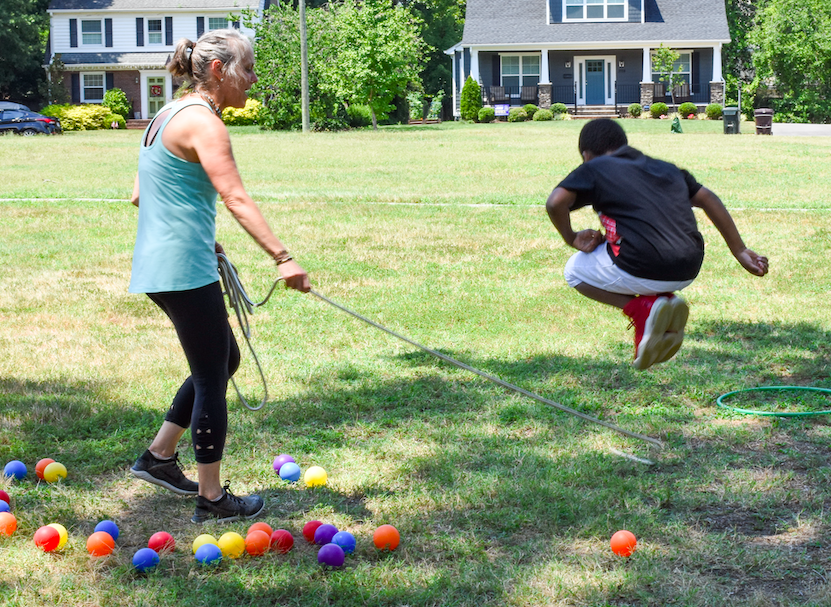It’s another school year and great excitement comes with it: new backpacks, a fresh box of crayons, new friends. But parents are thinking of one thing: their children’s success.
Success comes from building a strong foundation in any skill. When it comes to learning, children must build a strong base on which to support their academics from reading and writing to math and science. They must build neural pathways in their brains to move from simple thoughts to complex reasoning so one day they may become successful doctors, teachers, firefighters or executives.
Sadly, our culture treats the body as if its sole job is to carry the brain around so it can do all the fancy thinking for us. But the brain needs the body to explore the world and to react to the brain’s interpretation of it. In fact, our physical activity is inextricably linked to our learning.
First, the body must be strong enough to learn. Through physical activity, children build a strong core that allows them to sit comfortably in a chair and through physical activity, they strengthen arms and hands so they can hold a pencil, scissors or book. Through physical activity children build upper body strength so they can hold up their heads and their eyes can focus to read.
Second, through physical activity, children build neural connections and healthy brains. By crossing the midline climbing or skipping they improve the conversation between the right and left brain. Through aerobic movement, they create new brain synapsis and connections.
The American Academy of Pediatrics (AAP) recommends children get at least 60 minutes a day of physical activity, but this isn’t happening. Inactivity is impacting how children succeed which is among the many reasons the AAP has recently advised pediatricians to write prescriptions for play at annual well visits.
School used to provide a great opportunity for physical activity but by the end of 1992, 40% of U.S. schools had eliminated or reduced recess and researchers have found if schools offer 20 minutes/day of recess, they frequently do it instead of offering PE, rather than in conjunction with PE. In Virginia, elementary schools are required to offer 20 minutes a day of recess, but many schools don’t remotely meet that requirement.
Recess and PE are as critical to the school day as the three R’s: Recess provides an opportunity for children to develop an internal sense of control and confidence though self directed play while also building physical and aerobic strengths. PE on the other hand, gives children an opportunity to test activities and movement skills, helping them find something they enjoy and may continue to enjoy through life. The structured environment offered by PE also allows children to work with trained PE teachers who can help them hone gross motor skills among other critical physical skills.
After school physical activity is critical to better studying and better sleep too! Walking the dog as a family or making an after dinner trip to a local playground will build strengths and aerobic capacity while burning off steam from the day. Even joining children in a game of horse at the basketball net or catch in the backyard will build brain body connections that will make learning easier. Plus it is fun for everyone!
Confident movers are more confident on the playing field and playground, but also in the classroom and life. Children with strong bodies have an easier time learning, paying attention, and developing critical and creative thought. Ensuring children get enough physical activity during the day will not just build healthy children, but successful ones as well!
